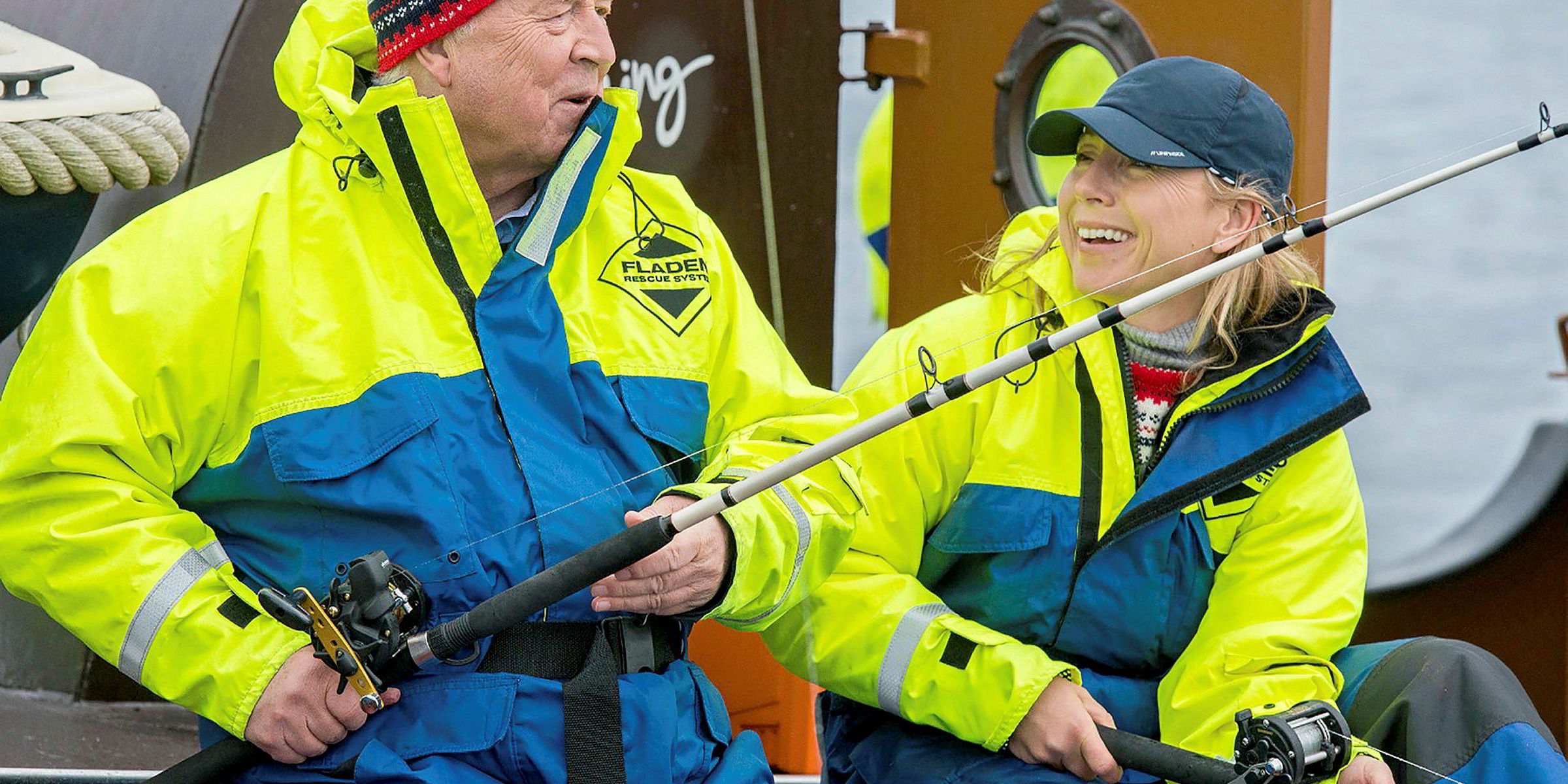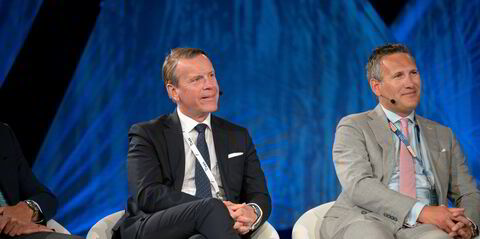Torstein Hagen, for the more mature TradeWinds reader, is famous for his long but ultimately unsuccessful fight to take over Dutch container line Royal Nedlloyd in the early 1990s. At the time, he was chairman of investment company Det Norske Oljeselskap (DNO).
“I came very close but not close enough and I lost everything. Everything,” he told TradeWinds during an interview onboard the 47,800-gt cruiseship Viking Star (built 2015).
He is based in Switzerland but was visiting Bergen for a flag-raising ceremony on the ship.
Hagen describes Nedlloyd as a conglomerate that was deeply undervalued.
“We had a codename for it: ‘One to Five’,” he said, adding that the listed liner company was valued at 20% of its true value.
He says that when he started out as an investor in 1987, it was not fashionable to attack conglomerates.
“I think it was one of the first conglomerate raids in Europe,” Hagen said.
Hagen says his idea was to restructure Nedlloyd as a true container company and use it to lead a consolidation of the sector.
He says he ran out of money during the process and made a couple of mistakes.
“I bought too many shares and had too much debt,” he said.
Hagen recalls that, at one point, he approached Maersk Mc-Kinney Moller, who had been a client when Hagen was a partner at consulting firm McKinsey & Co in the 1970s, to ask if AP Moller-Maersk would be interested in taking part in the deal. Mc-Kinney Moller replied that it was not the company's policy to get involved in hostile takeovers but suggested Hagen contact then managing director Jess Soderberg — who was not interested.
Hagen says CSX Corp, the owner of SeaLand, was also in the mix because it wanted to spin off the container line and merge it into Nedlloyd.
“But of course both these two entities, and later P&O, ended up in Copenhagen,” he said.
“P&O had exactly the same problem as Nedlloyd, being spread over too many areas."
He says the company was starved of capital and that, in the past, it was company managers who made capital allocations.
“Today, it’s the fidelities, the hedge-fund guys, who do the capital allocation," he said. "They don’t leave that to managers. Managers should operate companies."
Asked what lessons he learned from the experience, Hagen says he was invited by the finance partners at McKinsey & Co to talk about exactly that at a conference in Copenhagen.
“By nature, I’m quite an open person," he said. "I don’t have very many secrets."
He has avoided a lot of stress that way.
“So I told these very important guys what had happened," he added. "Then I said to them, ‘What do you think I learned from this?' In answer to your question, the next slide was… blank! Nothing!”
Laughing, he says he would have done it all again.
“But I wouldn’t have bought so many shares," he said. "And I wouldn’t have had debt on the shares.”
Hagen’s right-hand man at the time was Tor Olav Troim, who later went to fight for control of the merged entity Royal P&O Nedlloyd while working for his boss, John Fredriksen. Consolidation was again the intention.
“But they got burned too,” Hagen said. Fredriksen sold his stake to AP Moller-Maersk in 2011.
Hagen describes Troim as a “very clever guy”. He says they had a falling out at DNO but he is not willing to discuss it.
“People thought he was my chief analyst," he said. "But I have always been chief analyst in my companies. I’m very analytical."
Hagen also respects Fredriksen as a “phenomenal man”.
Hagen was born in 1943 and Fredriksen in 1944. The latter has indicated he is in no mood to retire and will stay around in the top job for at least three to five years. Hagen says he has a similar perspective.
Onboard the Viking Star were also members of the pensioners’ club of Bergens Dampskibsselksab (BDS), which Hagen led from 1976, also becoming chief executive of San Francisco-based Royal Viking Line from 1980 to 1983. They evidently hold Hagen in respect and affection. Hagen admits that does not surprise him and jokes that it was always the newspapers that liked to “make up how bad he was to his staff”.
Those six years in Bergen were some of the most fun during his career.
“Taking a company [BDS] from virtual bankruptcy to becoming very rich [was very satisfying],” he said. “But there were members of the board who didn’t have any vision whatsoever. They became political and, in the end, they squeezed me out so the chairman could become chief executive.”
He earlier made the point that is why BDS no longer exists. He strongly denies leaving the company without a strategy.
“I left behind a document that explained exactly what the strategy should be," he said. "We should not sell the cruise business and all that. The board was so embarrassed to receive it, they never dealt with it."
The sale of Royal Viking Line — to Kosmos — particularly saddened him.
Hagen suffered another setback in 1994 while chairman of DNO, with the failure of a project he worked on with Troim to build a series of suezmax tankers at Daewoo Shipbuilding & Marine Engineering (DSME) in South Korea.
“It was a very good scheme but a few things went wrong," he said. "I ended up again with nothing."
In retrospect, he says he should never have been in the oil business with DNO.
“It was strange but when I [Marine Investment] became a majority shareholder in DNO, for the first time in the company’s history we did not get an allocation in the 13th licensing round in Norway [in 1991]," he said. "I have no logical explanation for that. But I know for a fact that I never paid a bribe."



